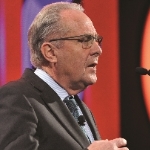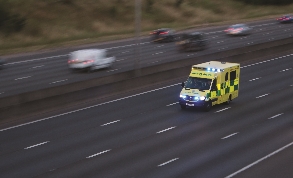Carter points to £500m ambulance savings

The new report on the emergency side of ambulance services from Lord Carter, a non-executive director at NHS Improvement and NHS productivity champion, follows his two earlier reports into productivity in acute and mental health/community services.
If paramedics treated more patients at the scene or referred them to services other than A&E, the service could save £300m – mainly from reduced A&E attendance and subsequent admissions. Currently ambulance trusts take on average 58% of patients to A&E, but the range stretches from 52% to 64%.
The report calls for all trusts to target 50%, but recognises that this will require significant improvements in the availability and accessibility of the urgent and emergency care system. It also acknowledges that all trusts have approaches to manage demand in place, but few know if interventions are having an impact.
Implementation of a more efficient operating model could improve productivity and save a further £200m by 2021, the report claims. It makes nine recommendations in total covering the need to improve benchmarking, staff planning, fleet management and the performance of control centres.
It highlights challenges with sickness absence rates, with the ambulance service having the highest absence rate in the NHS, losing 20 days per member of staff each year. If reduced by 1%, this could save £15m a year.
A common operating model for ambulance services would include standardising call triaging and processes, delivering best practice protocols for clinical assessment in the control centre and on scene, moving to a common specification for ambulances and converging the technical infrastructure to enable shared call-handling.
Delivery of these goals could be incentivised through the CQUIN system. However, in future safe reduction in avoidable conveyance should be incentivised through the use of the tariff. The current national currency covers: calls; hear and treat/refer; see and treat/refer; and see, treat and convey. Encouraging greater treatment on scene or referral could require the tariff to reflect the additional time taken by paramedics on scene.
Though there is a national currency, prices are set locally. However, seven of the 10 ambulance trusts are currently on block contracts.
Lord Carter said too many patients were being taken to A&E unnecessarily, putting pressure on hospital services, costing money and providing the wrong response for patients. ‘An ambulance is not a taxi to A&E,’ he said. ‘Modern technology means patients can often be treated at the scene. But an ageing ambulance fleet means this is not always possible.
‘It is vital that improvements are made in the infrastructure of the wider NHS to help frontline staff work as efficiently as possible.’
Miriam Deakin, NHS Providers’ deputy director of policy and strategy, said there has been impressive progress in treating patients at the scene. ‘To be able to realise the levels of savings identified, we must address pressures in other parts of the health and care system,’ she said. ‘Reducing unnecessary trips to hospitals in ambulances could save money, but it will require investment in other areas.’
Related content
We are excited to bring you a fun packed Eastern Branch Conference in 2025 over three days.
This event is for those that will benefit from an overview of costing in the NHS or those new to costing and will cover why we cost and the processes.